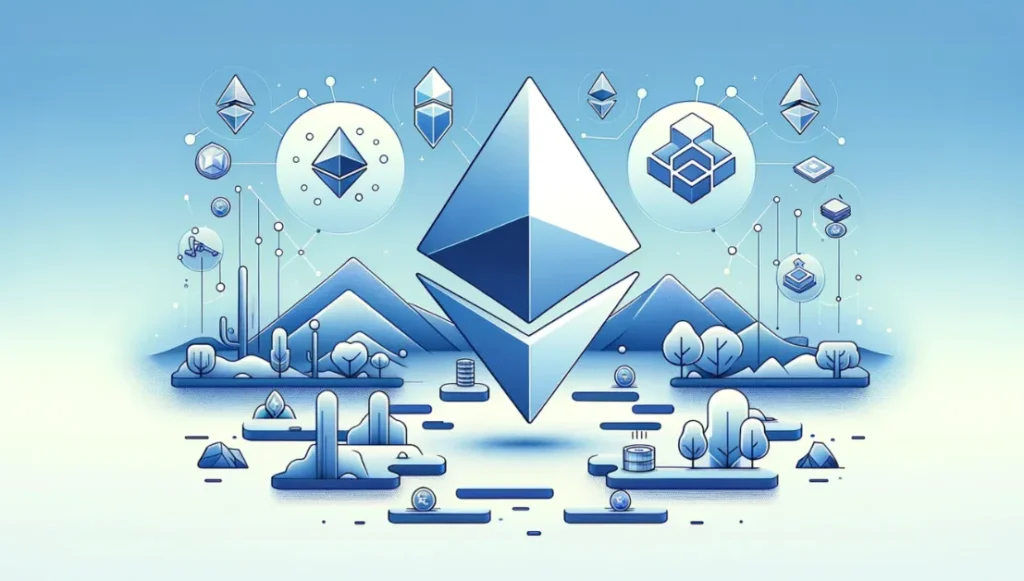In the arena of blockchain technology, few systems have garnered as much attention and acclaim as Ethereum. Born from the vision of Vitalik Buterin in 2013 and officially released in 2015, Ethereum has developed into a sprawling ecosystem that now not only powers virtual currencies but also serves as a foundation for an extensive variety of decentralized programs (DApps) and modern projects. In this complete evaluation, we delve into the numerous additives of the Ethereum surroundings, its key functions, applications, challenges, and future possibilities. In the expansive Ethereum ecosystem, one noteworthy addition is Ethereum Code, an Ethereum platform facilitating seamless transactions for traders.
The Genesis of Ethereum
Ethereum emerged as a reaction to the constraints of Bitcoin, aiming to expand the functionality of blockchain beyond simple peer-to-peer transactions. At its core, Ethereum is a decentralized platform that permits developers to build and set up smart contracts, which are self-executing agreements with predefined situations written into code. This modern idea paved the way for the introduction of decentralized applications across diverse industries.
The Ethereum Blockchain: The Foundation of Decentralization
The Ethereum blockchain serves as the spine of the ecosystem, imparting a decentralized and immutable ledger for recording transactions. Unlike conventional databases, which are centralized and managed by an unmarried authority, Ethereum’s blockchain is maintained via a network of nodes unfolding throughout the globe, ensuring censorship resistance and tamper-proof record-keeping.
Smart Contracts: Powering Decentralized Applications
One of Ethereum’s greatest improvements is its guide for smart contracts. These self-sufficient scripts allow builders to create DApps that run with no downtime, fraud, or interference from third parties. Smart contracts execute mechanically while predefined situations are met, facilitating an extensive range of packages, along with decentralized finance (DeFi), delivery chain management, gaming, and more.
Decentralized Finance (DeFi): Redefining the Financial Landscape
Decentralized finance has emerged as one of the most prominent use cases for Ethereum, leveraging clever contracts to create open and permissionless financial services. Platforms like Compound, MakerDAO, and Aave allow customers to lend, borrow, trade, and earn interest without counting on traditional financial institutions. DeFi protocols have unlocked new possibilities for monetary inclusion, transparency, and innovation, attracting billions of greenbacks in value locked within the environment. For those looking to enter the crypto space, platforms like Moonpay make it easy to buy Bitcoin and Ethereum, providing seamless access to the growing decentralized finance ecosystem.
Ethereum 2.0: Scaling Solutions and Beyond
Despite its innovative competencies, Ethereum has faced scalability challenges, specifically at some stage in periods of excessive community congestion. Ethereum 2.0, additionally referred to as Eth2 or Serenity, targets to deal with those demanding situations through a chain of enhancements, which include the transition to a proof-of-stake (PoS) consensus mechanism and the implementation of shard chains.
The transition to PoS replaces the strength-extensive evidence-of-work (PoW) algorithm with an extra-efficient and environmentally friendly consensus mechanism. Validators are chosen to advocate and validate new blocks primarily based on the quantity of ether they preserve and are willing to stake as collateral, reducing the need for computational strength and electricity intake.
Shard chains introduce parallel processing, permitting the Ethereum community to process more than one transaction simultaneously across special shards. This partitioning of the blockchain improves scalability and throughput, allowing Ethereum to support a wider variety of transactions and DApps without compromising decentralization.
Challenges and Opportunities Ahead
While Ethereum has made sizable strides in advancing blockchain technology, it faces several demanding situations on its path to mainstream adoption. Scalability, interoperability, safety, and regulatory compliance are a number of the key problems that need to be addressed to comprehend Ethereum’s complete potential.
However, those demanding situations also give opportunities for innovation and boom inside the Ethereum surroundings. Developers, marketers, and lovers hold the opportunity to explore new use instances, experiment with novel technologies, and collaborate on solutions to overcome current barriers.
Conclusion
The Ethereum atmosphere represents a paradigm shift in how we conceive and interact with decentralized technology. From its inception as a blockchain platform to its evolution into a thriving ecosystem of decentralized programs and protocols, Ethereum has reshaped the virtual landscape in profound ways.
As Ethereum keeps innovating and evolving with upgrades like Ethereum 2.Zero, its effect on finance, era, and past is poised to grow exponentially. With its colorful community, groundbreaking technology, and unwavering dedication to decentralization, Ethereum stays at the leading edge of the blockchain revolution, bringing forward the imaginative and prescient vision.
